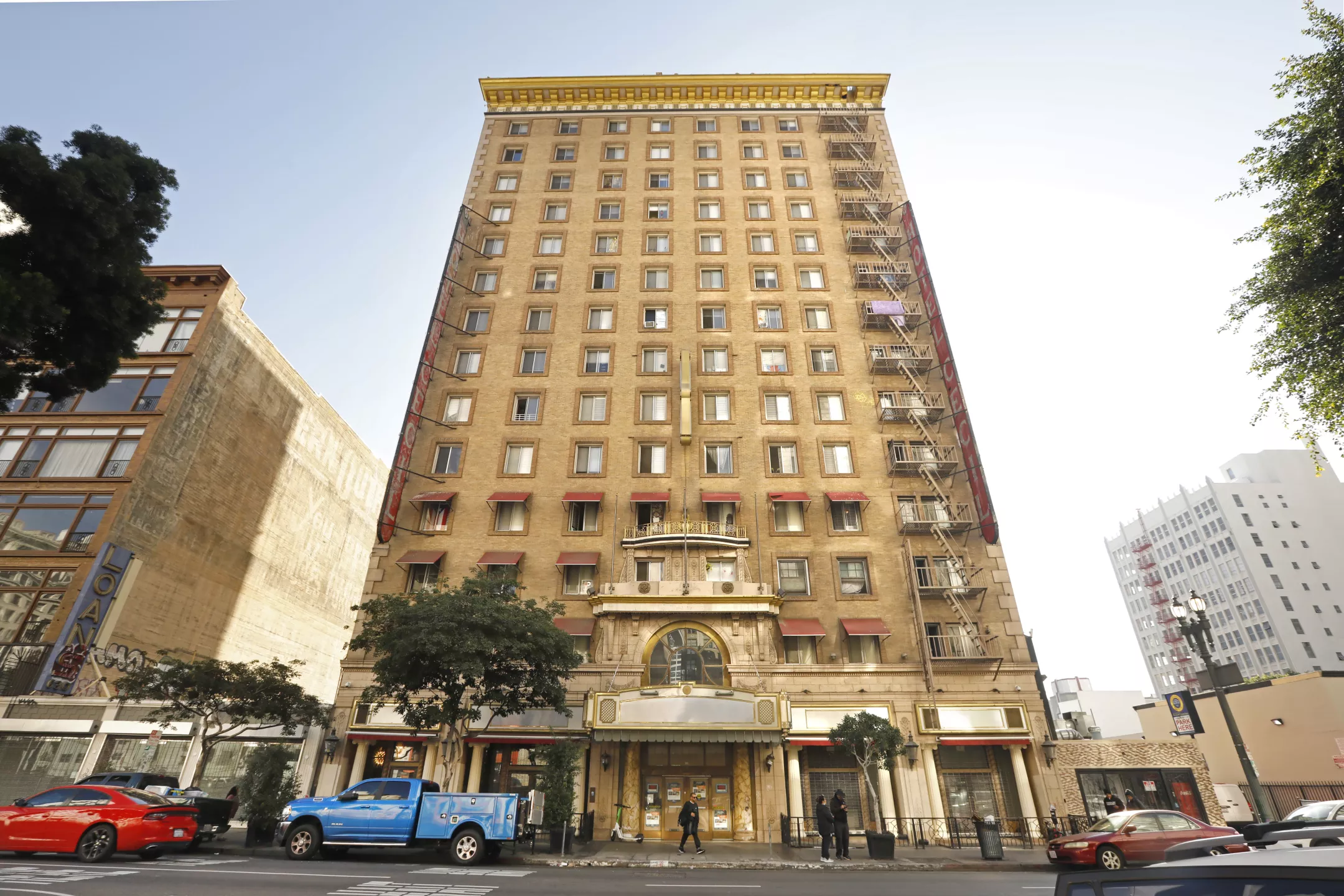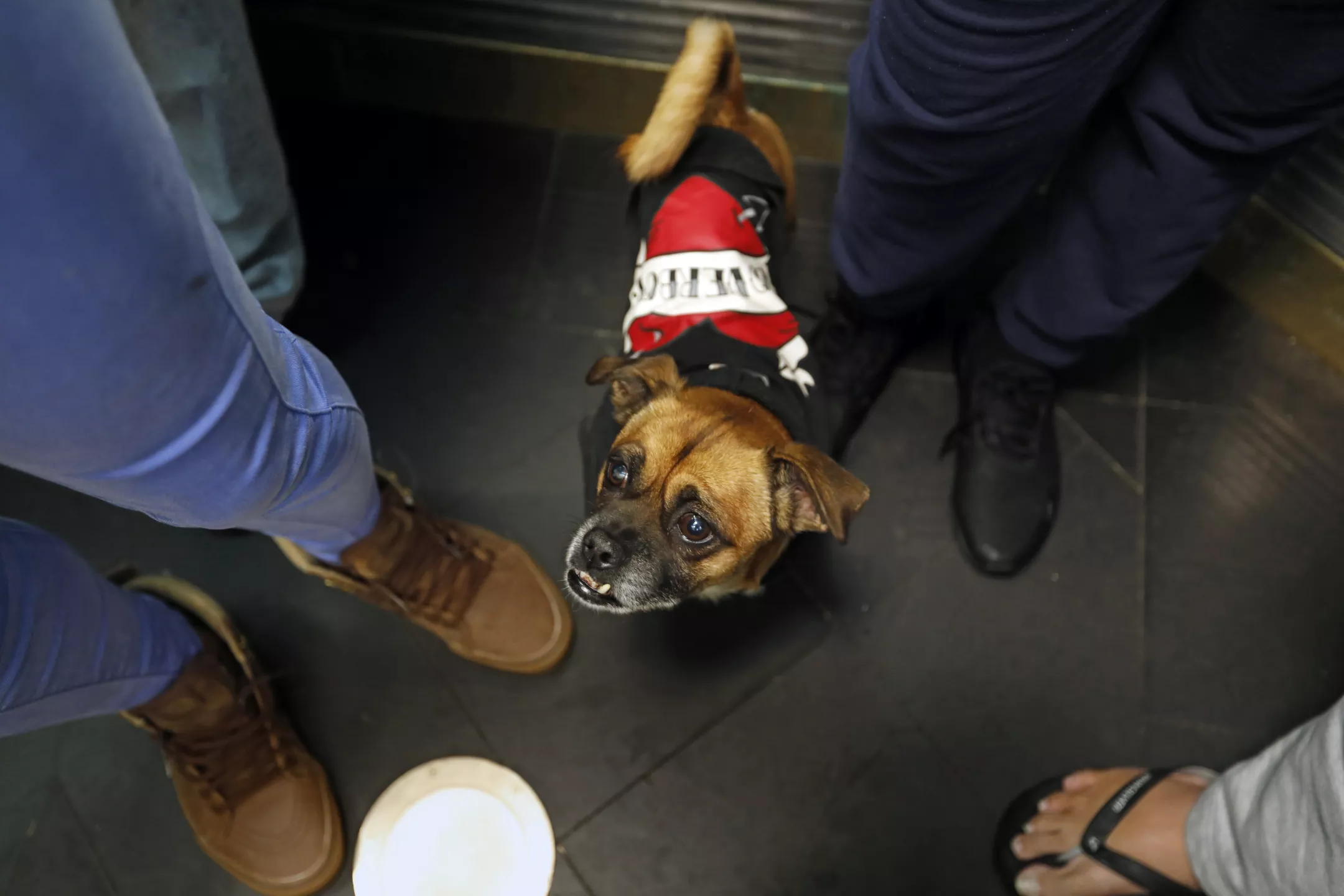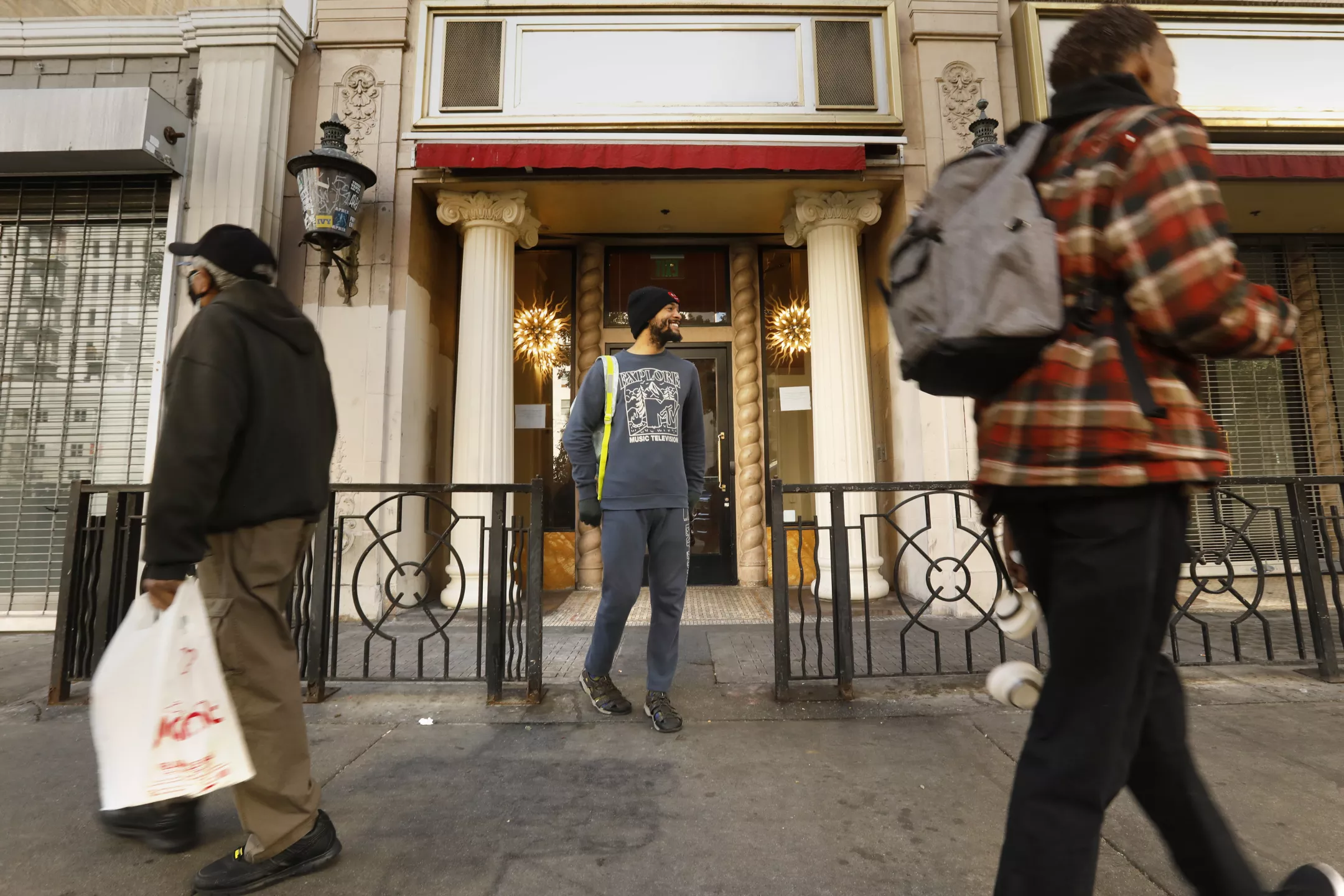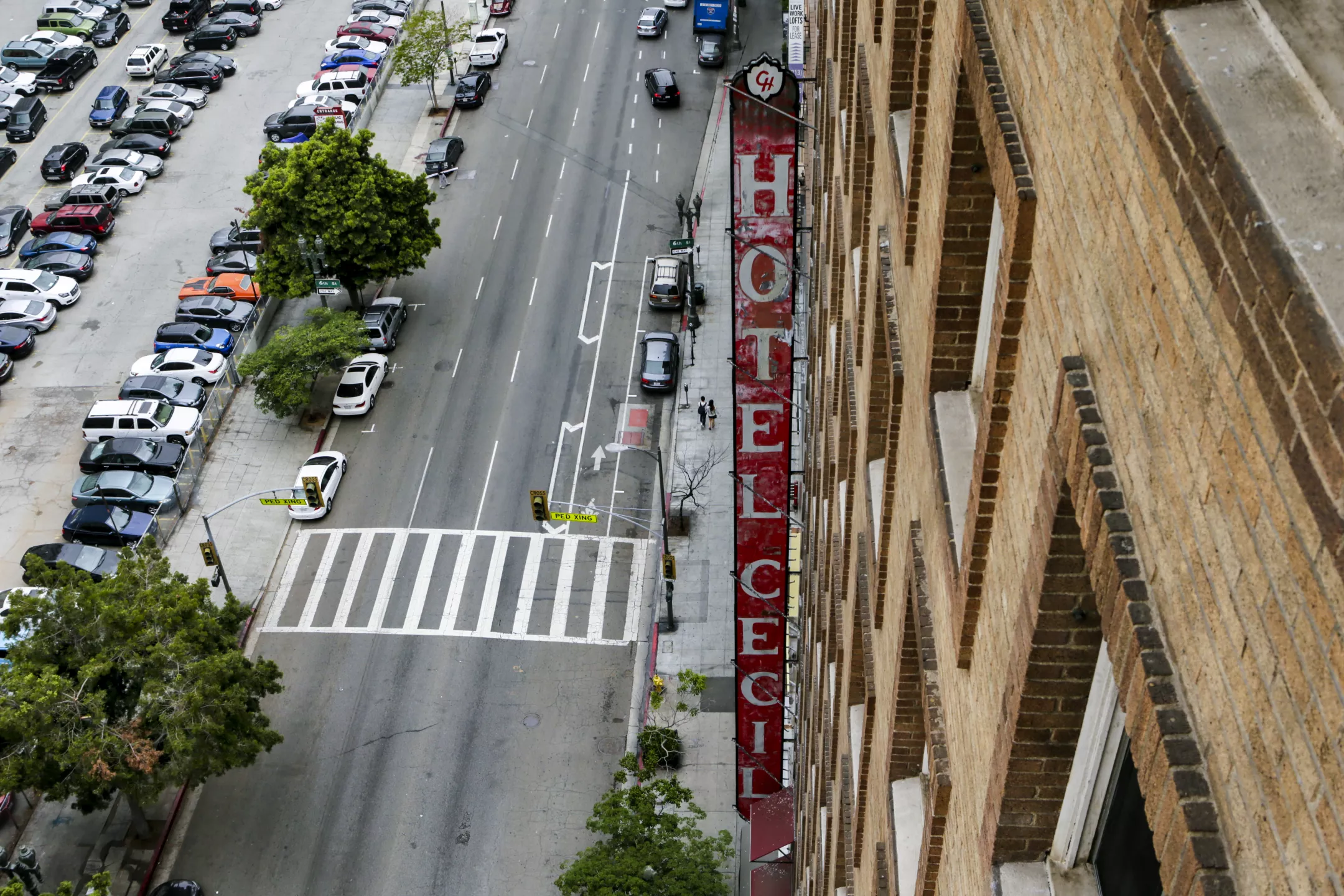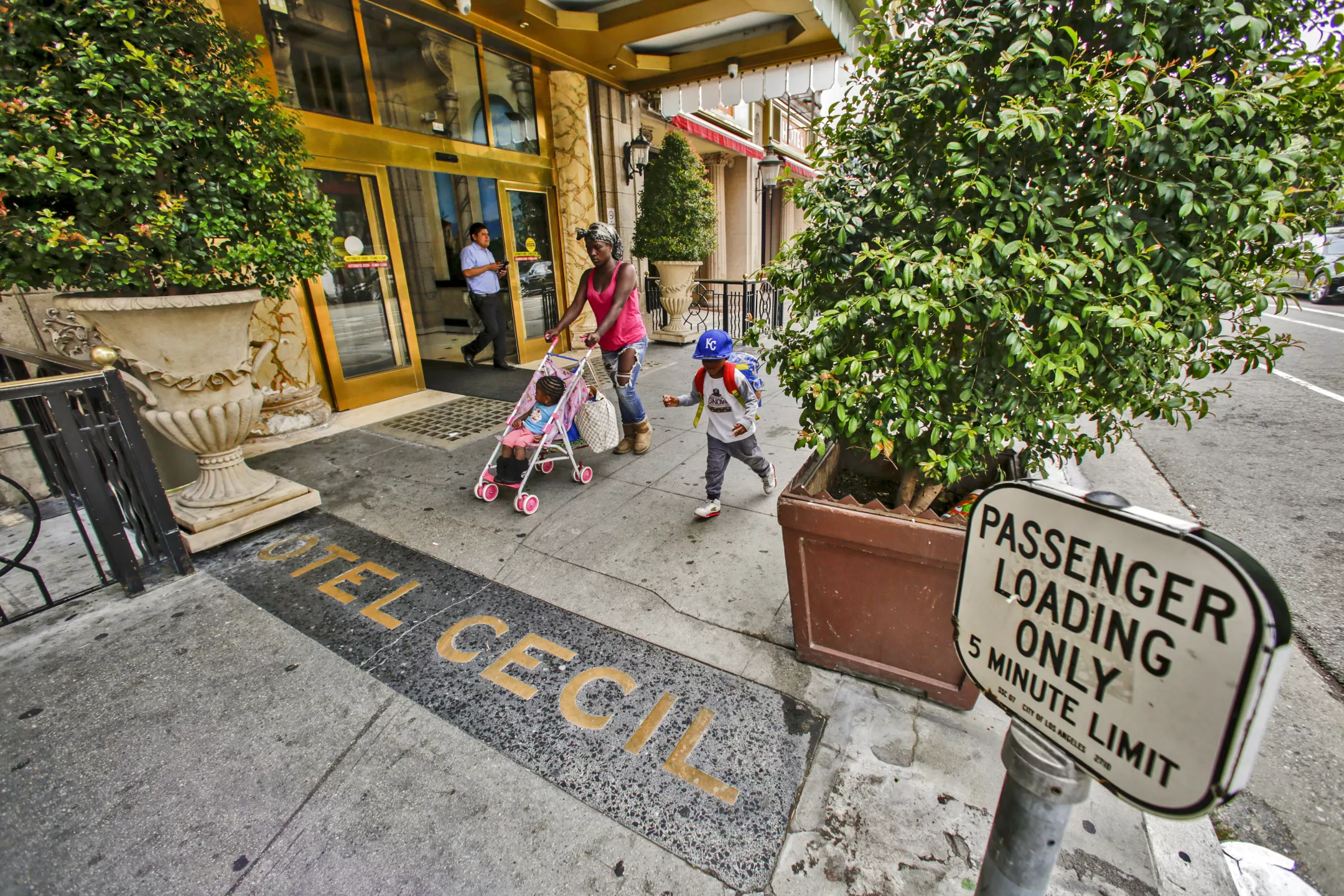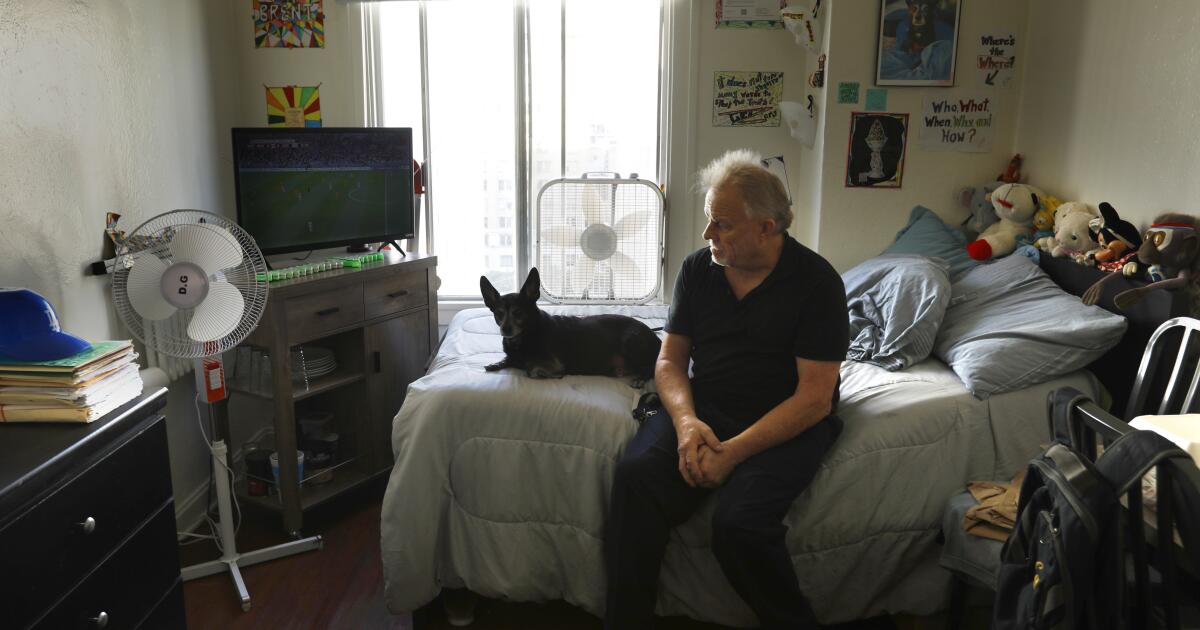
A year after opening 600 rooms to L.A.’s unhoused, the Cecil Hotel is still mostly empty. Here’s why
The Cecil Hotel was supposed to be an innovative new model for permanent supportive housing in L.A. Why is it struggling to fill rooms?

Brent Fode and his dog TaterTot are now living at the Cecil Hotel. Even with solid funding and the best of intentions, the Cecil project to provide housing for homeless Angelenos has struggled to overcome a system beset with a slow-moving bureaucracy and multiple failure points.
(Carolyn Cole / Los Angeles Times)
BY JAIMIE DING
STAFF WRITER
DEC. 13, 2022 5 AM PT
It’s not much — a bed with a mattress, a small nightstand, a dresser, a closet and some assorted appliances in a 160-square-foot room.
Some of those rooms have bathrooms, but most don’t. Several floors of the 14-floor building were sweltering over the summer, as residents waited for the air conditioner to turn on. The kitchen is all the way on the bottom floor.
Still, the Cecil Hotel represents an opportunity for its formerly homeless inhabitants to have a room of one’s own — one that comes with 24-hour security and the freedom to come and go without curfews.
The historic hotel, with its haunted reputation and 600 rooms, reopened in December 2021 as a privately funded permanent supportive housing project. With most of the rooms reserved specifically for those in the bottom 30% of the area’s median income, it’s open to any of the thousands of unhoused Angelenos with a government-funded voucher. Many viewed the project as a promising new model in L.A. because of its size and flexibility.
“There aren’t necessarily other projects like this,” said Jet Doye, former chief advancement officer of the Skid Row Housing Trust, which serves as the Cecil’s building manager. In addition to the all-private capital financing, she notes that it’s unusual for a landlord to be willing to accept any tenant-based voucher someone might have.
And yet, a year later, two-thirds of the Cecil remains unoccupied.
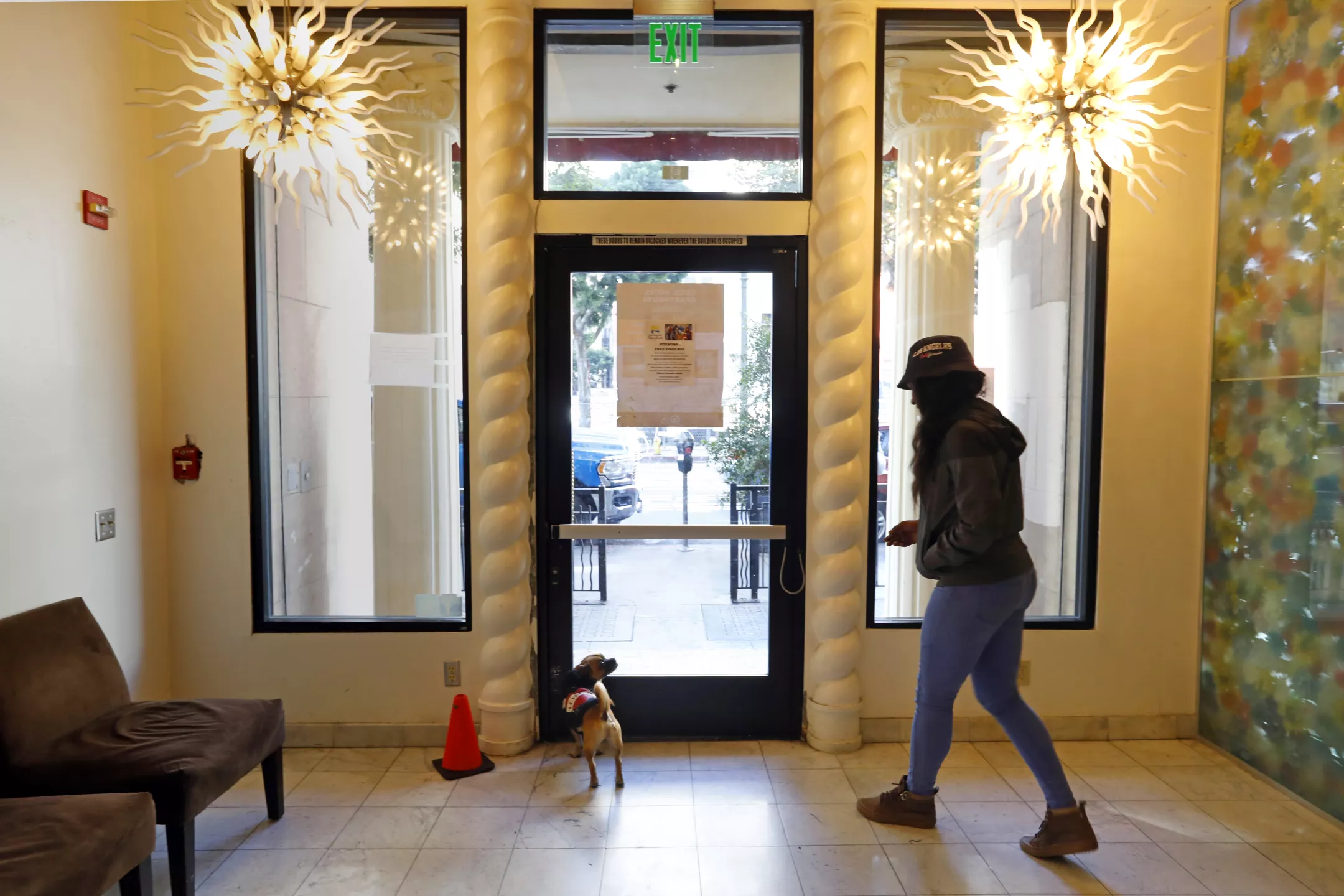
A resident leaves the Cecil Hotel to walk her dog.
(Carolyn Cole / Los Angeles Times)
At a time when more than 40,000 people are experiencing homelessness in the city, it may seem unfathomable for 400 units to be sitting empty in a building near skid row, the epicenter of L.A.’s homelessness crisis. But even with solid funding and the best of intentions, the Cecil project has struggled to overcome a system beset with a slow-moving bureaucracy and multiple failure points, and to offer housing that serves a population with myriad needs
A future home
“The confined space kind of bothers me,” Lakeshia Luckey said as she peered into one of the rooms. The 44-year-old has been living in her car for several months after her house was foreclosed on and she lost her job at a care facility.She feared that the cramped quarters of the apartment wouldn’t be good for her mental health and didn’t want to set herself up for failure. “When I get stable, I don’t want to fall in that space again,” Luckey said.
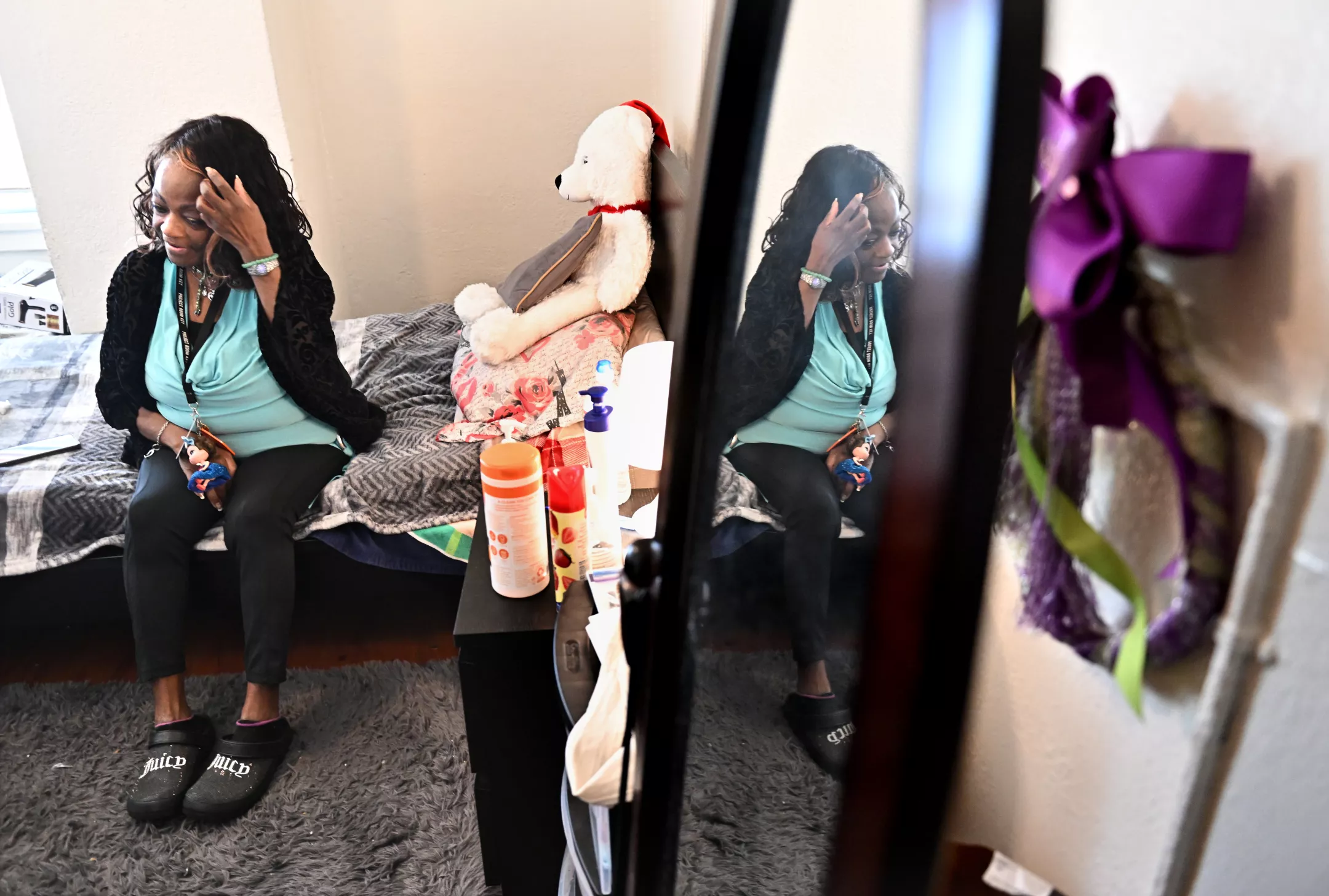
Melony Bohler relaxes in her apartment at the Cecil Hotel in downtown Los Angeles. Bohler said getting a room at the hotel “answered my prayers.”
(Wally Skalij / Los Angeles Times)
As they shuffled through the narrow hallways of the 10th floor, prospective tenants had a range of reactions to the Cecil Hotel as a possible future home.
One man, who had been living in one of the tiny home villages in the San Fernando Valley run by Hope of the Valley Rescue Mission, quickly decided on a corner unit that had a shower. “I’m just ready to move,” he said.
“Make sure to write the [room] number if you like it,” said Jose Tovar — residents know him as Pedro — who’s worked at the Cecil for 38 years. He reminded everyone that they could move in that same day if they had a rapid rehousing subsidy. All they needed to do was have their case manager submit a promissory note committing to pay the rent.
While some immediately went downstairs after the tour to submit an application with building manager Raoul Zibi, others went outside and scoffed at the idea of living there.
“Not nearly enough space,” said Christopher Vivier, who was looking for a room with his wife, Victoria. “I personally like our tiny home better than there.”
But the ones who’ve decided to make the Cecil their home have few complaints. So far, nearly a fifth of Cecil’s residents have come from word-of-mouth referrals.
William Moore moved into his room in mid-July from another tiny home village in the San Fernando Valley. He had been there since November 2021 and was previously homeless for about two years.
“It’s really quiet here, no ghosts,” Moore said, laughing, referring to the hotel’s history of mysterious and violent deaths, which became the subject of a 2021 Netflix documentary. He’s quickly settled in and has been working security jobs through referrals.
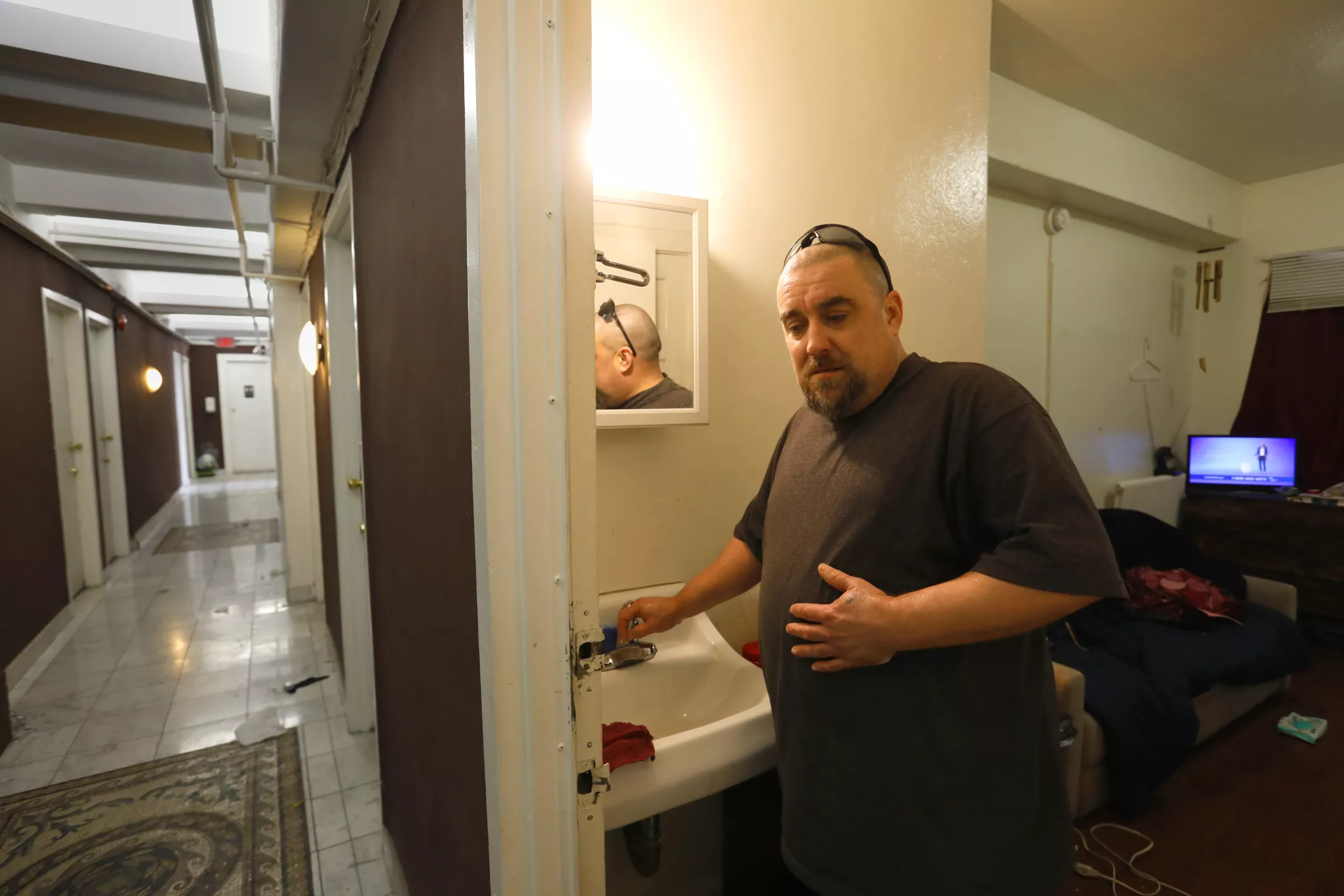
Some of William Moore’s former neighbors in a tiny home village in the San Fernando Valley followed him after he moved in to the Cecil Hotel in downtown Los Angeles. “We all share here, you know?” he said.
(Carolyn Cole / Los Angeles Times)
Moore brought several friends from the tiny home village with him. After one came to check out his place and take a shower, he loved it so much that he moved in right next door to Moore, bringing a couple of other people with him. Moore enjoys the community they’ve built in a short time, sharing food and cooking in the communal kitchen together.
“If I don’t have enough food I go ask him, [we] go back and forth,” Moore said. “We all share here, you know?”
“If I don’t have enough food I go ask him, [we] go back and forth,” Moore said. “We all share here, you know?”
Simon Baron Development, a New York-based real estate developer, acquired the building in late 2015 through a 99-year ground lease with plans to renovate the structure and turn it into half hotel, half market-rate apartments.
At the time, the firm was working with the Skid Row Housing Trust to make 15% of the apartments affordable for the extremely low-income bracket. While the developer was securing funding for the hotel portion of the plan, however, COVID-19 hit — and “blew up” the financing for the project. The hotel industry was gutted. The developer needed a new business plan.
The housing trust came up with the idea of turning the entire building into affordable housing.
“Clearly Los Angeles, as other major dense, expensive urban areas, has a huge affordability problem and a huge homeless problem,” said Matthew Baron, president of Baron Property Group (now separate from Simon Development). “We figured out a way … we can service that part of the market and become a viable business plan.”
